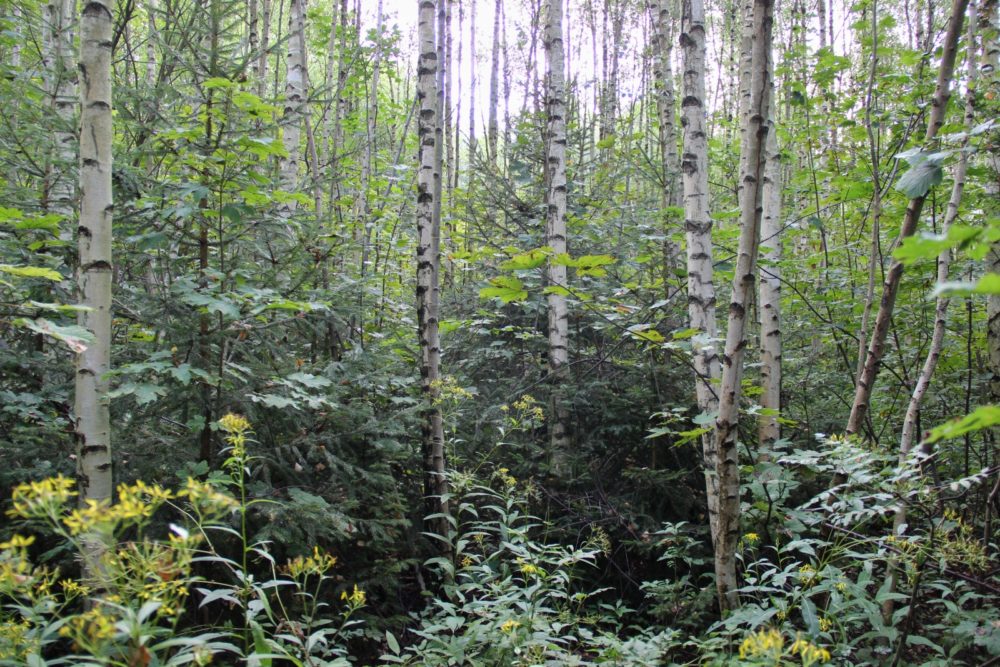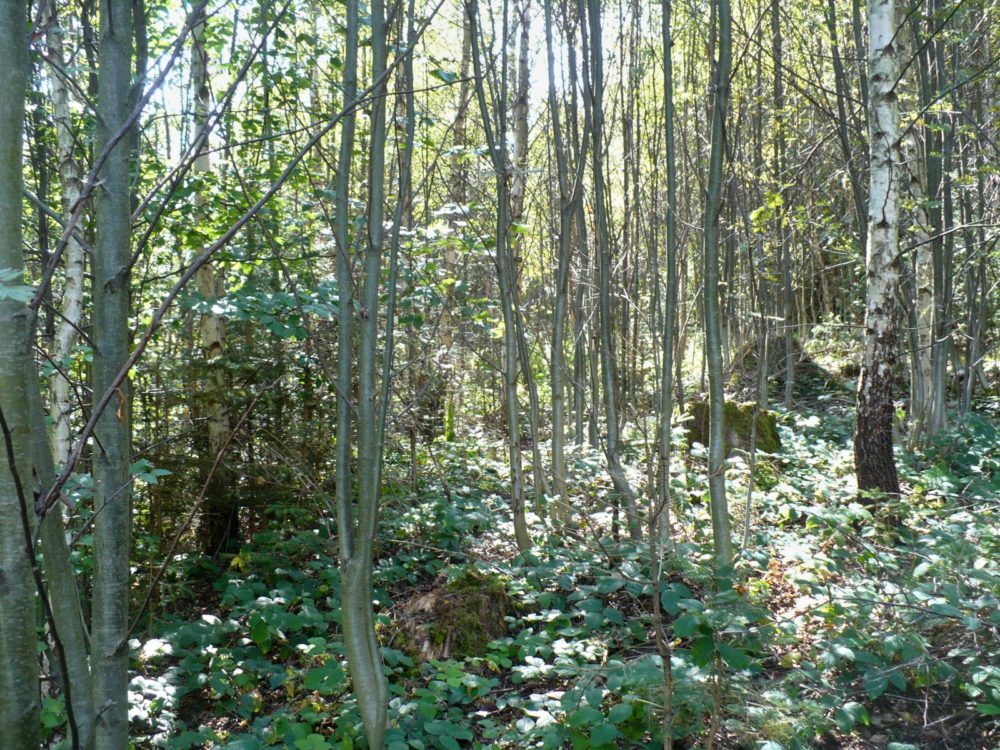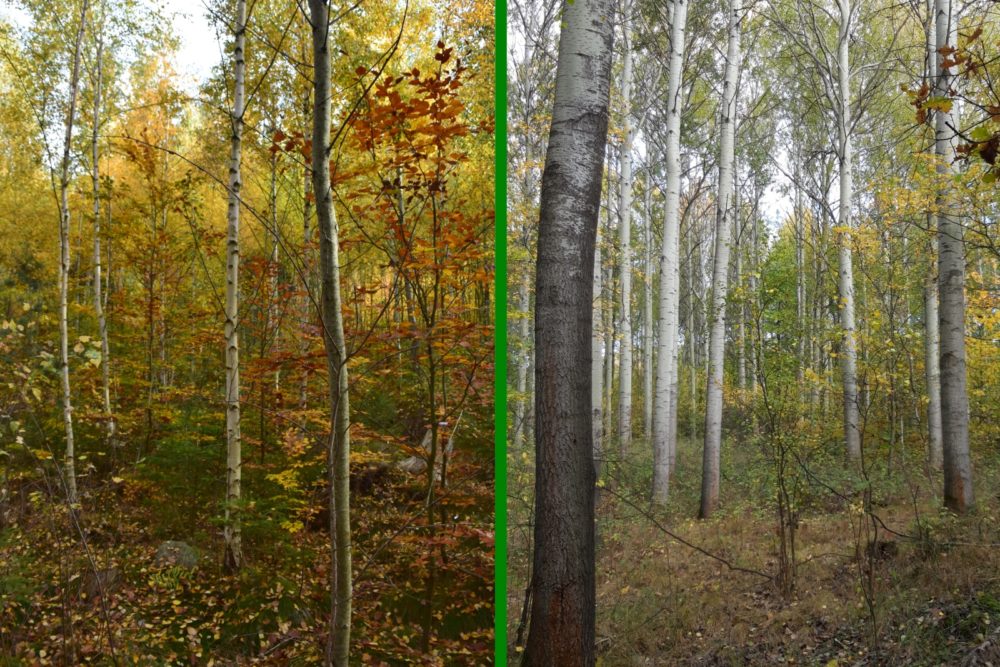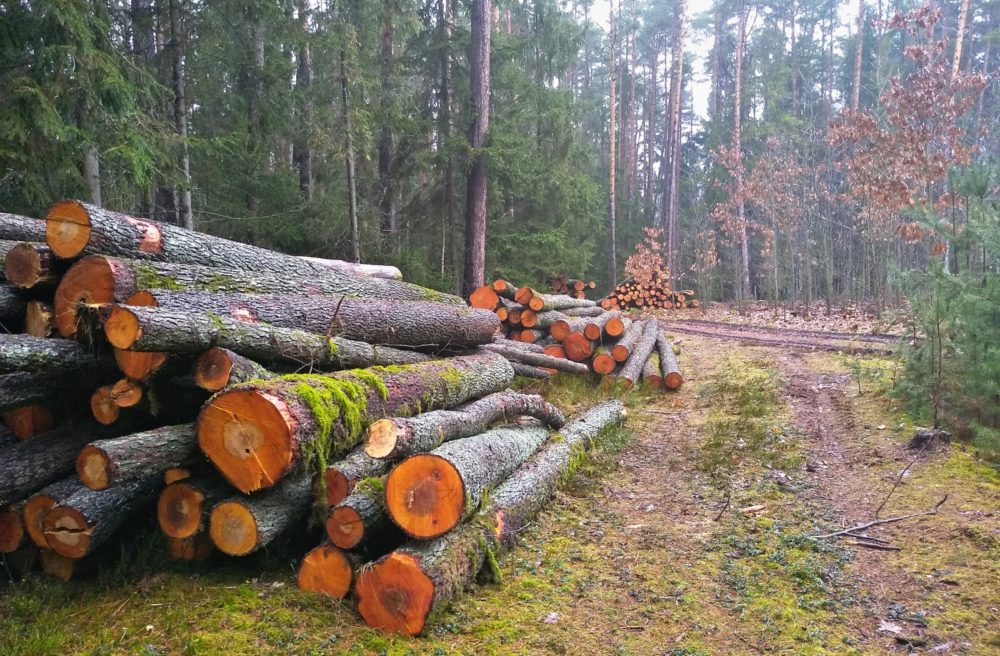The care for species-rich forests is much more complicated than for monocultures
In our territory, global climate change and the related large-scale disintegration of spruce and pine forests in the last two decades have forced forest owners to start changing the tree species composition and plant more diverse forests. From appropriately selected mixtures of forest trees, foresters expect higher production, mitigation of the adverse effects of drought, and overall higher resistance of such stands to the ongoing adverse effects of climate change.
 Photo: Birch with spruce and sycamore maple undergrowth, FGMRI (VÚLHM) archive
Photo: Birch with spruce and sycamore maple undergrowth, FGMRI (VÚLHM) archive
In mixed forest stands, the relationships and interactions of tree species change the physiology and morphology of individual species and lead to changes in the supply and use of nutrients, which affects the production of these stands. Therefore, in the field of forest cultivation, scientists are increasingly focusing on the issue of creating stand mixtures with promising forest trees and formulating the principles of silvicultural measures in the youngest stands concerning their future resistance and stability.
As a result of the emergence of extensive calamity clearings, the issue of wider use of preparatory tree species and respect for some of the previously undesirable tree species with a pioneering growth strategy, often referred to in the past as so-called “weedy tree species”, has come to forestry practice.
As an example, it is possible to mention the use of silver birch in a wide range of habitats, European aspen at lower altitudes, European mountain ash at higher altitudes, and common alder at hydrically favourable habitats. In addition to the role of preparatory trees in two-phase forest renewal, these trees can also play a positive role as mixed trees in species-varied vegetation mixtures.
In addition to amelioration and strengthening functions, increasing biodiversity, increasing the habitat’s nutritional value for animals, and protecting target tree species from the adverse effects of the calamity forest environment, these trees can also fulfil an important function of wood production and be a source of valuable and commercially interesting assortments, in some cases.
 Photo: Young European mountain ash stand with admixed birch and beech, FGMRI (VÚLHM) archive
Photo: Young European mountain ash stand with admixed birch and beech, FGMRI (VÚLHM) archive
Given the importance of this topic, scientists from the Opočno Research Station, VÚLHM, v. v. i., have prepared, for the needs of practical foresters, a certified methodology for the use of preparatory tree species in mixtures and principles for the first silvicultural interventions in these stands. (Využití přípravných dřevin ve směsích a zásady pro první výchovné zásahy v těchto porostech.
In the methodology, the scientists describe the possibilities of using preparatory wood species (silver birch, European aspen, rowan, and black alder) in vegetation mixtures – especially in the restoration of current calamity clearings. These tree species have a high potential for natural regeneration, including vegetative regeneration. They are also highly promising when using combined regeneration.
In the methodology, there are described principles of the first silvicultural interventions in young forest stands with emphasis on the creation of species-varied mixtures. The issue of silviculture of mixed stands is much more complicated and requires higher forestry expertise and experience than silviculture of homogeneous stands.
In the case of silviculture of mixed stands, it is necessary to respect the biological properties of individual tree species and site conditions, similar to the case of homogeneous stands.
The first silvicultural interventions (in the stage of young growths or advanced growths) present a very important silvicultural measure for maintaining mixtures in young stands. Neglecting silviculture measures can have adverse consequences, even in mixed stands.
 Photo: Left – birch with beech and spruce in the understory. Right – poplar aspen mixed with birch, FGMRI (VÚLHM) archive
Photo: Left – birch with beech and spruce in the understory. Right – poplar aspen mixed with birch, FGMRI (VÚLHM) archive
Therefore, methodology describes new procedures for the restoration of calamity clearings using a combination of artificial and natural regeneration. This procedure ensures the formation of young mixed stands and thus fulfils the main goal of the restoration of calamity clearings, which is the creation of a stable stand with a significant spatial arrangement and species diversification.
Instead of formal recommendations, scientists in the methodology emphasize the individual economic and cultivation goal of the forest owner, taking into account the fulfilment of non-production functions of forest stands.
The most important economic effect of preparatory tree species use is cost savings for the restoration of post-calamity areas. When using the cultivation procedures proposed in this methodology, the savings within the Czech Republic can be calculated in the order of tens of millions of CZK.
The scientists calculated the total financial savings during the restoration of disaster areas in moderately rich habitats at 17.5% of direct costs per hectare.
 Photo: Black alder can also play an important wood production function, FGMRI (VÚLHM) archive
Photo: Black alder can also play an important wood production function, FGMRI (VÚLHM) archive
In addition to adjusting to the unfavourable growth environment of calamitous clearings, stands of preparatory trees also quickly produce usable woody biomass. For example, the production of birch stands in water-affected habitats can exceed 180 m3 in 30 years.
Financial profitability is also directly proportional to the production of wood. As it follows from the model results, economically profitable production can usually be counted on from the 10th year of the age of the preparatory stand. The model yield of birch stands on water-affected habitats in medium locations in 30 years was calculated at 220,000 CZK per hectare of stands.
However, the most important value is the restoration of the forest itself, because, in areas affected by the calamitous disintegration of stands, the very existence of current forest ecosystems is often threatened, i.e. not only their wood production is threatened, but also all non-production functions.
The methodology was developed as part of the NAZV project QK1810126 “Establishment and cultivation of mixtures of preparatory and target tree species fulfilling production and non-production functions of the forest in the area of large-scale dying spruce stands” („Zakládání a výchova směsí přípravných a cílových dřevin plnících produkční a mimoprodukční funkce lesa v oblasti velkoplošně hynoucích smrkových porostů“).
Authors: Ing. David Dušek, Ph.D., Ing. Jan Leugner, Ph.D., Ing. Jiří Souček, Ph.D., Ing. Jiří Novák, Ph.D., Ing. Dušan Kacálek, Ph.D., VÚLHM, v. v. i., VS Opočno, e-mail: dusek@vulhmop.cz
The methodology “The use of pioneer tree species in mixtures and the first thinning prescription for the stands” (Využití přípravných dřevin ve směsích a zásady pro první výchovné zásahy v těchto porostech) can be downloaded here.
Prepared by Ing. Jan Řezáč, FGMRI (VÚLHM, v. v. i.), e-mail: rezac@vulhm.cz
Introductory photo: Birch with beech in the undergrowth, the autumn. FGMRI (VÚLHM) archive
